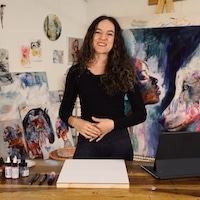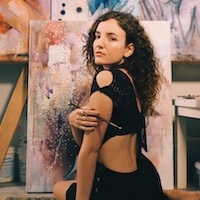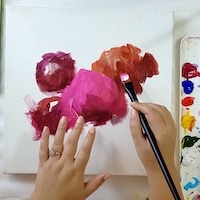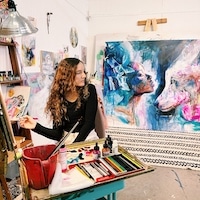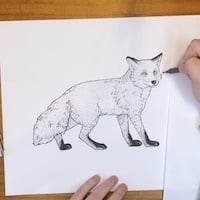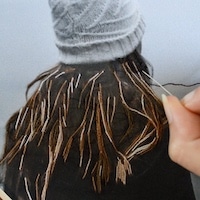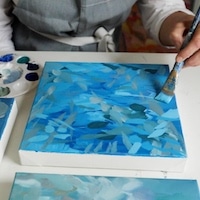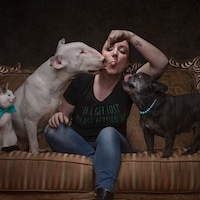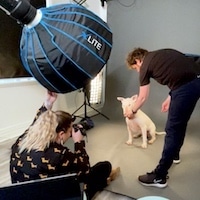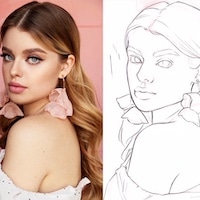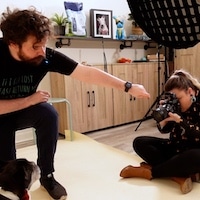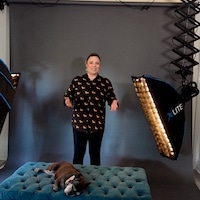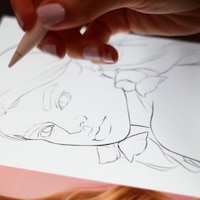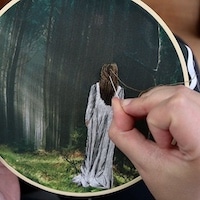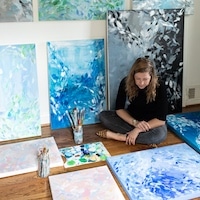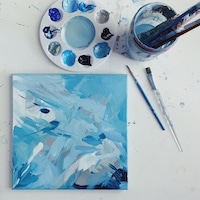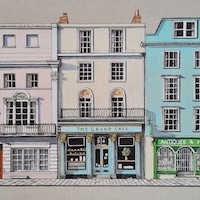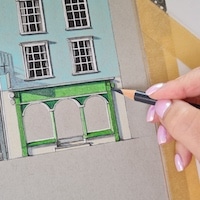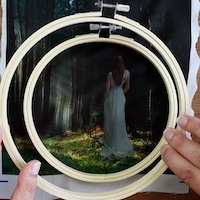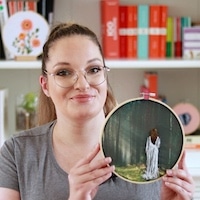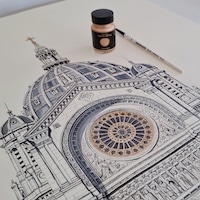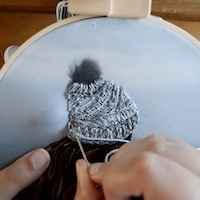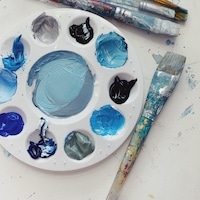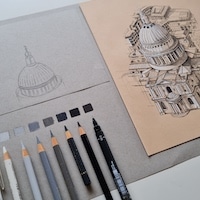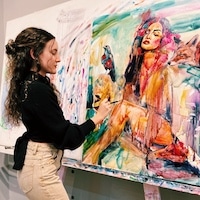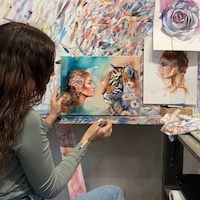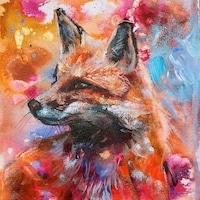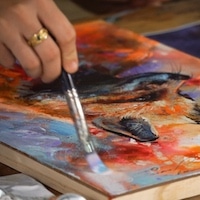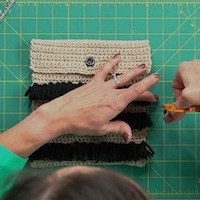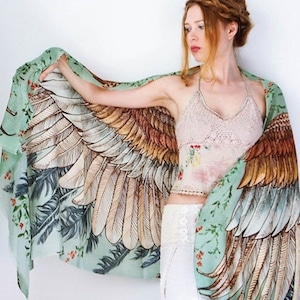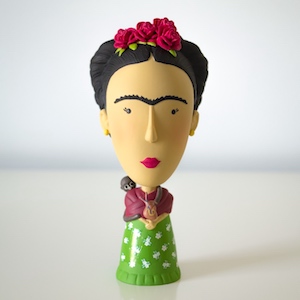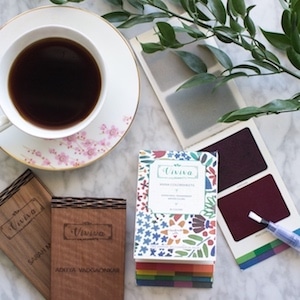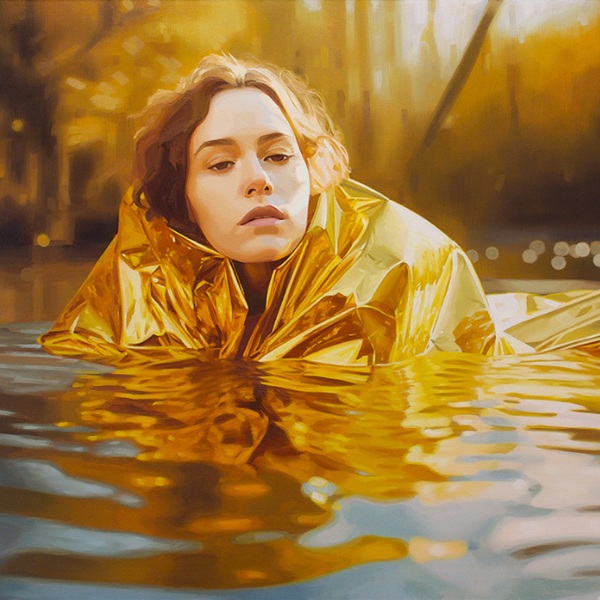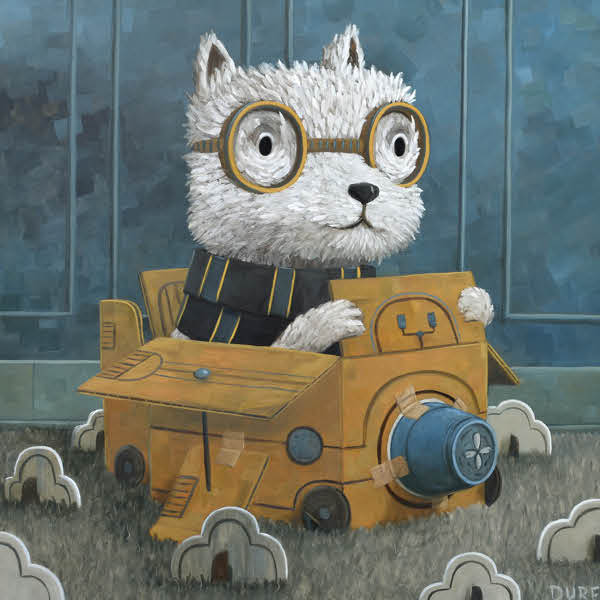
“Moment of Truth.”
Toy robots have followed Eric Joyner around ever since his days at the Academy of Art in San Francisco. While there, he’d keep a few on his shelves; but despite their near-constant presence, it was only after 10 years of working as an illustrator that he began painting them in earnest. A toy robot has great visual appeal—they’re composed of angular shapes, tinny color palettes, and are simply a playful subject. In his fantastical paintings, Joyner certainly appreciates these elements, but he takes them a step further as well.
“I was at first compelled by a strong desire to understand human behavior and the role that conflict plays in all life,” Joyner tells My Modern Met. “For me, intelligent life is the most interesting subject and by expressing this importance by means of bringing inanimate objects to life, hopefully people can escape themselves for a few moments and see things differently.”
Joyner’s newest solo exhibition, Looking Sideways, achieved exactly that, plunging viewers deep into bizarre and surreal worlds. Here, robots purchase ice cream cones from quaint, local shops; they snap selfies while cuddling in bed; or they watch as Godzilla and King Kong fight one another across a desolate, desert landscape. They also often appear alongside another one of Joyner’s recurring symbols: donuts.
“On the surface, robots and donuts placed together for any reason seems absurd—and is,” the artist says. “I’m just holding a mirror to humanity. We are here and don’t know why.”
Perhaps no painting better exemplifies this than Matinee, in which robots attend a screening of 2001: A Space Odyssey as massive donuts tumble from the sky above. At first glance, the scene seems mundane, complete with stark facades and fluffy clouds. Joyner’s contouring is equally direct, echoing a mid-century style and setting similar to those seen in Edward Hopper’s work. Even the robots blend in, their blocky bodies and awkward limbs not registering immediately. It’s the donuts—and their sheer scale—that hint at Joyner’s preference for the absurd, forcing us to scan the composition once again.
“Absurdity and surrealism are a big part of my work as I try to make sense of the world today,” Joyner explains. “We need to see things from different angles to better understand, grow, and not look at life so negatively all the time, as the corporate media and politicians would prefer.”
For Joyner, robots and donuts “coexist in strange harmony,” creating an uncanny effect even in the most familiar of environments.
“The robots fumble toward something human, mirroring our own attempts to find meaning in a world growing increasingly fragmented,” Joyner says of Looking Sideways. “Donuts appear as both coping mechanisms and existential props: absurd, sweet, and fleeting, much like the comforts we cling to in the face of uncertainty.”
Even with these conceptual underpinnings, Joyner’s work remains buoyant, humorous, and even relatable. In Moment of Truth, for instance, a robot mother has taken her robot child to a bakery, watching as he surveys the plethora of donuts in front of him. His metallic claws rest on the bakery counter and, though we can’t see his robotic face, we still recognize the feeling he must be experiencing: wonder, if not pure glee.
“[It’s] my favorite painting [in the exhibition],” Joyner remarks. “I wanted to capture the moment when a child makes his first visit to a bakery.”
Regardless of their inanimate subjects, Joyner’s paintings are deeply concerned with humans—what they want, what they think, what they feel, and, above all, where they’ll go from here.
“As we teeter on the edge of a murky future shaped by artificial intelligence, these paintings become reflections of our collective anxieties and quiet hopes,” Joyner concludes. “They suggest that perhaps even in a world of circuits and code, the desire for tenderness, joy, and a donut remains universal.”
Eric Joyner: Looking Sideways was recently on view at Corey Helford Gallery.
Looking Sideways, Eric Joyner’s recent solo exhibition at Corey Helford Gallery, explored the absurdity of the world through robots and donuts.

“The Scrollers.”

“Matinee.”

“Someday World.”

“Baker's Nightmare.”
Both robots and donuts are recurring themes throughout Joyner’s practice, which is grounded in pop surrealism.

“Frida at Work.”

“Ice Cream Shop.”

“Hammer Throw.”

“Walking the Dog.”
Eric Joyner: Looking Sideways was on view from July to August 2025.

“Bat Break.”

“Lou's Market.”

“New Frontier.”





